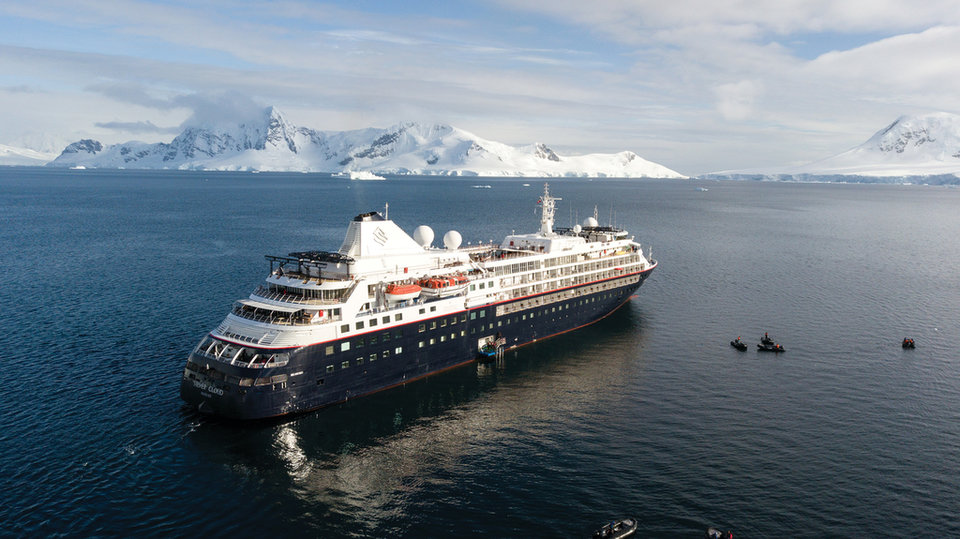Collaboration for Safe Exploration
Safety is top of mind every time a ship sets sail particularly when heading to poorly chartered waters. FarSounder is paying attention. Their users regularly travel to the far corners of the globe and are the perfect match to partner with the International Hydrographic Organization (IHO) to provide data collected by its users.
 nnovation in cruising is in full bloom. As cruise ship operators continue to seek out new, exciting experiences for their customers, they are rapidly expanding their offerings of exclusive destinations. Their customers are demanding unique itineraries which, in turn, demand the most advanced technologies to bring them there and back safely.
nnovation in cruising is in full bloom. As cruise ship operators continue to seek out new, exciting experiences for their customers, they are rapidly expanding their offerings of exclusive destinations. Their customers are demanding unique itineraries which, in turn, demand the most advanced technologies to bring them there and back safely.
One key piece of innovative equipment that has recently grabbed the attention of technical staff is FarSounder’s line of 3D Forward Looking Sonars (3D FLS). These sonar systems are designed for real-time obstacle avoidance and navigation. FarSounder’s 3D FLS keep vessels safe while allowing passengers to enjoy an experience of a lifetime. Having this state-of-the-art system as part of the navigation suite, allows the bridge crew to identify potential hazards up to 1000 meters (over ½ nautical mile) ahead of the vessel in 3D and in real-time. This sonar gives the crew time to adjust course as needed and sail ahead with confidence.
The primary function of the 3D FLS is to “see” the vast and varied bathymetric contours in the seas, oceans, and bays ahead of the vessel in real-time. However, FarSounder’s innovations do not stop there. This past year, FarSounder has focused on improving algorithms and delivering new features including Local History Mapping™. This capability builds a 3D bathymetric map of the seafloor as the vessel sails. This map is updated with every ping and is displayed as an overlay on top of a standard nautical chart. When used together with the real-time sonar overlay, crew can quickly see what lies ahead and what they’ve recently passed over.
FarSounder’s sonars bring clarity to the bridge crew for a wide range conditions. This capability allows their customers to go places other vessels cannot. For example, in 2017, The World set the world record for the most southerly navigation while exploring the Bay of Whales in Antarctica’s Ross Sea. Other FarSounder customers use the sonar to navigate through shallow water archipelagos of the south Pacific.
Over the years, many terabytes of sonar data have been collected from vessels in many locations around the world with varying seasons, installation types, vessel speeds, and signal types. The team is now exploring using these capabilities to extend knowledge of the marine world by applying the data that is collected. FarSounder recently became the first (and only) forward looking sonar company to be registered as a trusted node for the IHO’s Data Centre for Digital Bathymetry (DCDB)database hosted by NOAA.

Flame Retardant Carpet Protection Film protects carpets on floors, steps and stairs and is certified to the Marine Equipment Directive (Wheelmark).
FarSounder customers are regular visitors to the extreme corners of the globe, from the Northwest Passage to Antarctica as well as exotic tropical reefs and atolls. Data collected in these mostly poorly charted regions are highly valuable to the IHO’s efforts.
As part of these efforts, FarSounder has been working with select customers to record and collect sonar data along their routes. To date, data has been collected from locations as varied as Antarctica to the Panama Canal and Japan to Greenland. Their Sonar Data Collection Program is now being expanded to all FarSounder-500 and FarSounder-1000 customers.
Ships participating in this program are supplied with an external USB drive, which is able to record raw sonar data. Once full, the drive is sent back to FarSounder, where the sonar data is input into an engineering database. This information is used in a variety of ways including:
- Monitoring the performance of the sonar when used by customers in their actual locations.
- Improving the performance of algorithms through testing algorithms on data collected in more diverse places and on more vessels. The improved algorithms are then integrated into future software updates, improving sonar performance for existing customers.
- Working to expand mapping capabilities. Customer collected data is helpful to improve the products’ abilities to merge and combine large data-sets. Some of the data may be submitted to the IHO’s DCDB.

Flame Retardant Carpet Protection Film protects carpets on floors, steps and stairs and is certified to the Marine Equipment Directive (Wheelmark).
Expansion of their sonar data collection efforts is just one tool to keep cruise ship’s safe. “Since delivering our first navigation sonar systems in 2005, FarSounder continues to change the path of navigation with continual development of new products and improved features, “ says FarSounder Vice President of Engineering Matthew Zimmerman. “Our products allow our cruise ship customers to reduce risk while expanding the range of exciting itineraries and experiences they can offer to their passengers.”
Keeping your investment safe is priority one. Today however, delivering exclusive experiences to your passengers is what the market demands and imperative to a cruise company’s success. Blending these two priorities is what FarSounder does best. With a focus on making the world’s waterways safer through collaboration and innovation, cruise lines are looking to FarSounder as a real-world solution to bridge the priority gap. The FarSounder team will be exhibiting at Seatrade Cruise Global in Miami and available to discuss your specific needs and questions.
FarSounder, Inc.
151 Lavan Street
Warwick, RI 02888
USA
T: +1 401 784 6700